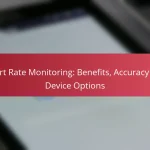For athletes, monitoring blood oxygen levels is crucial for optimizing performance and ensuring effective recovery. The best devices in this category offer accuracy, user-friendly interfaces, and additional fitness tracking features, enabling real-time insights during workouts. By assessing oxygen saturation, these monitors help athletes make informed decisions about their training and health.
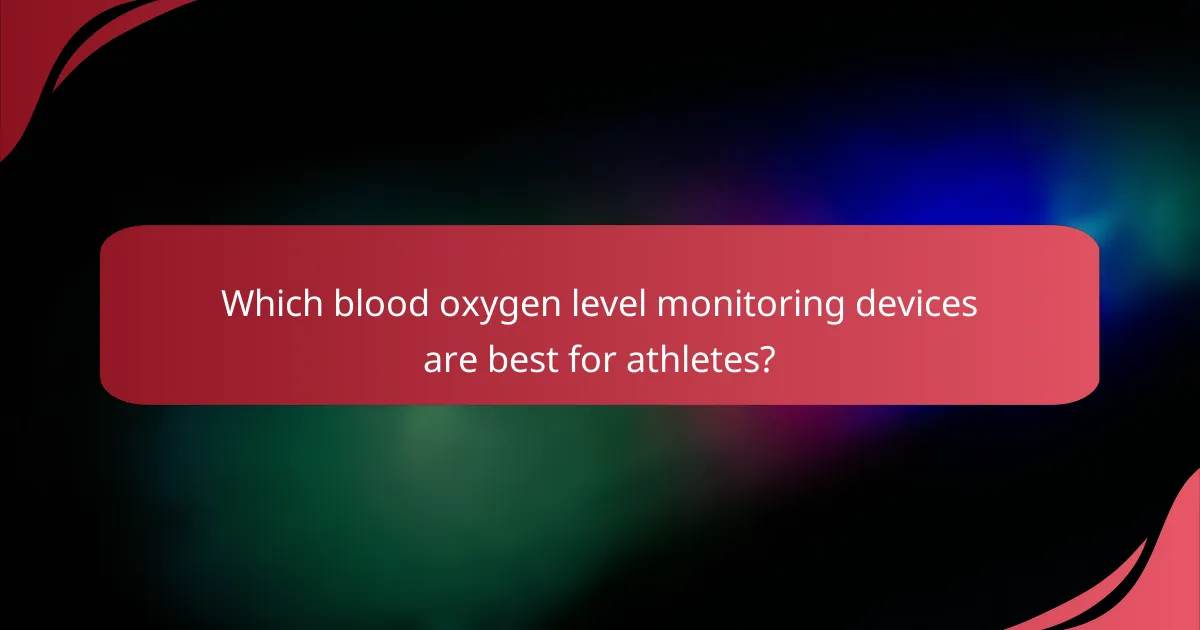
Which blood oxygen level monitoring devices are best for athletes?
For athletes, the best blood oxygen level monitoring devices combine accuracy, ease of use, and additional fitness tracking features. These devices help monitor oxygen saturation during workouts, providing insights into performance and recovery.
Garmin Forerunner 245
The Garmin Forerunner 245 is designed for serious runners and athletes, featuring advanced metrics including blood oxygen saturation monitoring. It uses a pulse oximeter to measure oxygen levels, which can help athletes understand their performance and recovery needs.
This device is lightweight and offers a battery life of up to a week, making it suitable for long training sessions. Its integration with Garmin Connect allows users to analyze their data comprehensively.
Apple Watch Series 8
The Apple Watch Series 8 includes a blood oxygen monitoring feature that provides real-time readings. It uses infrared light to measure oxygen levels, making it user-friendly and accessible for athletes of all levels.
With its seamless integration into the Apple ecosystem, athletes can track their workouts, heart rate, and oxygen levels in one place. The watch also offers various fitness apps and health tracking features, enhancing its utility for serious training.
Fitbit Charge 5
The Fitbit Charge 5 offers blood oxygen monitoring alongside a suite of fitness tracking features. It uses SpO2 sensors to provide insights into oxygen saturation, which can be particularly useful for athletes training at high altitudes.
This device is known for its comfortable design and long battery life, lasting up to seven days. The Fitbit app provides a detailed analysis of health metrics, helping athletes make informed decisions about their training and recovery.
Polar Vantage V2
The Polar Vantage V2 is a premium multisport watch that includes blood oxygen level monitoring as part of its extensive suite of features. It provides accurate readings that can help athletes optimize their training intensity and recovery strategies.
This device is particularly beneficial for endurance athletes, offering advanced training insights and a lightweight design. Its long battery life and robust build make it suitable for long-distance events and outdoor activities.
WHOOP Strap 3.0
The WHOOP Strap 3.0 focuses on recovery and performance, providing continuous blood oxygen monitoring. This device tracks various metrics, including heart rate variability and sleep quality, to give athletes a comprehensive view of their health.
With a subscription model, WHOOP offers personalized insights and recommendations based on the collected data. Its emphasis on recovery makes it a valuable tool for athletes looking to enhance their performance sustainably.
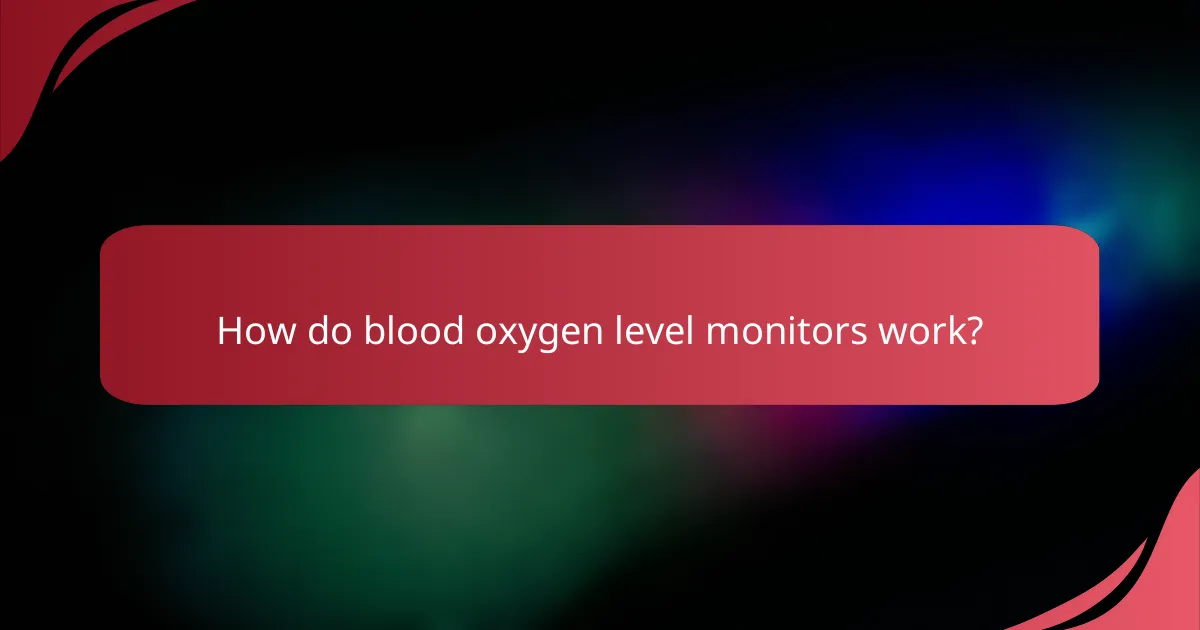
How do blood oxygen level monitors work?
Blood oxygen level monitors measure the oxygen saturation in your blood, typically using light sensors to assess how much oxygen is being carried by hemoglobin. These devices provide real-time data that can help athletes optimize their performance and monitor their health during training and competition.
Pulse oximetry technology
Pulse oximetry is the most common technology used in blood oxygen monitors. It works by emitting light wavelengths through the skin, usually on a fingertip or earlobe, and measuring the light absorption by oxygenated and deoxygenated blood. This non-invasive method allows for quick and accurate readings, typically within seconds.
Most pulse oximeters display oxygen saturation levels as a percentage, with normal readings typically ranging from 95% to 100%. Athletes can use this information to gauge their respiratory efficiency and make adjustments during training sessions.
Sensor types and accuracy
There are various types of sensors used in blood oxygen monitors, including fingertip sensors, wrist-based devices, and wearable fitness trackers. Fingertip sensors are generally more accurate, while wrist-based devices may offer convenience but can sometimes be less reliable.
When choosing a monitor, consider the accuracy ratings provided by manufacturers. Look for devices that meet standards set by organizations like the FDA or CE, as these certifications indicate a level of reliability. Keep in mind that factors such as skin pigmentation, movement, and ambient light can affect the accuracy of readings.
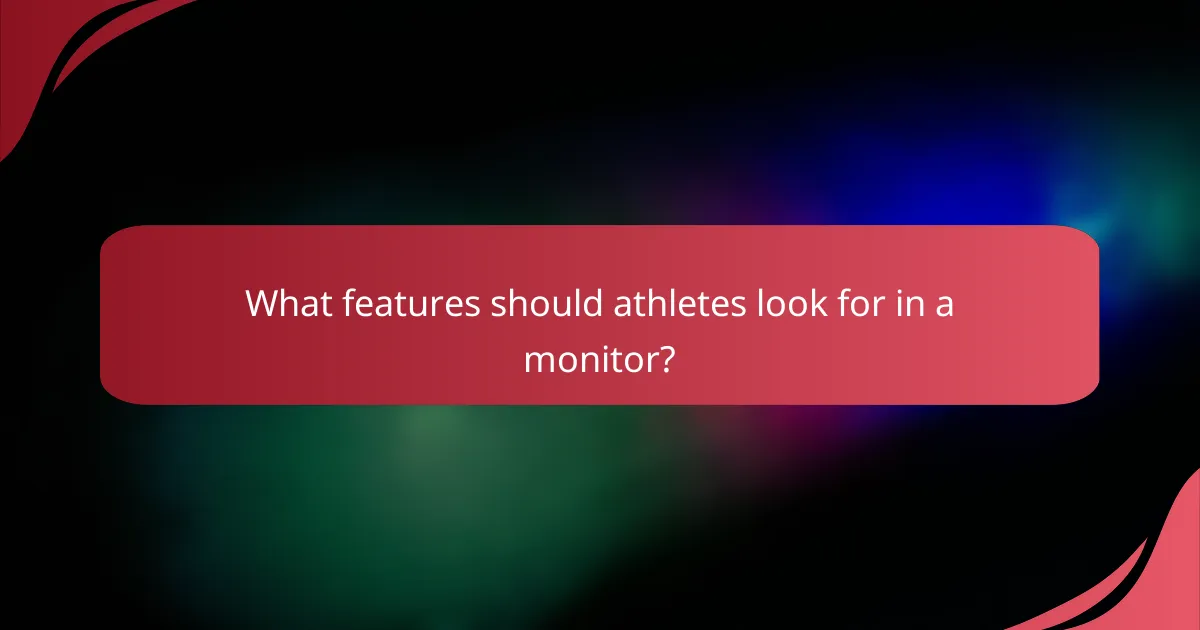
What features should athletes look for in a monitor?
Athletes should prioritize accuracy, ease of use, and additional functionalities when selecting a blood oxygen level monitor. Key features include real-time data tracking, compatibility with fitness applications, and robust battery life to support extended training sessions.
Real-time data tracking
Real-time data tracking is essential for athletes who need immediate feedback on their blood oxygen levels during workouts. This feature allows users to monitor their performance and adjust their intensity accordingly, helping to prevent fatigue and optimize training efficiency.
Look for devices that provide continuous monitoring and display readings in an easy-to-read format. Some monitors may offer alerts for low oxygen levels, which can be crucial during high-intensity activities.
Integration with fitness apps
Integration with fitness apps enhances the utility of blood oxygen monitors by allowing athletes to analyze their data over time. Many devices can sync with popular fitness platforms, enabling users to track their oxygen levels alongside other metrics like heart rate and activity levels.
When choosing a monitor, check for compatibility with apps you already use. This can streamline your training process and provide a more comprehensive view of your fitness progress.
Battery life considerations
Battery life is a critical factor for athletes who train for extended periods. A monitor with a long-lasting battery ensures that you can track your blood oxygen levels throughout your workout without interruption.
Consider devices that offer at least several hours of continuous use on a single charge. Some models may feature quick charging options or energy-saving modes, which can be beneficial for frequent users.
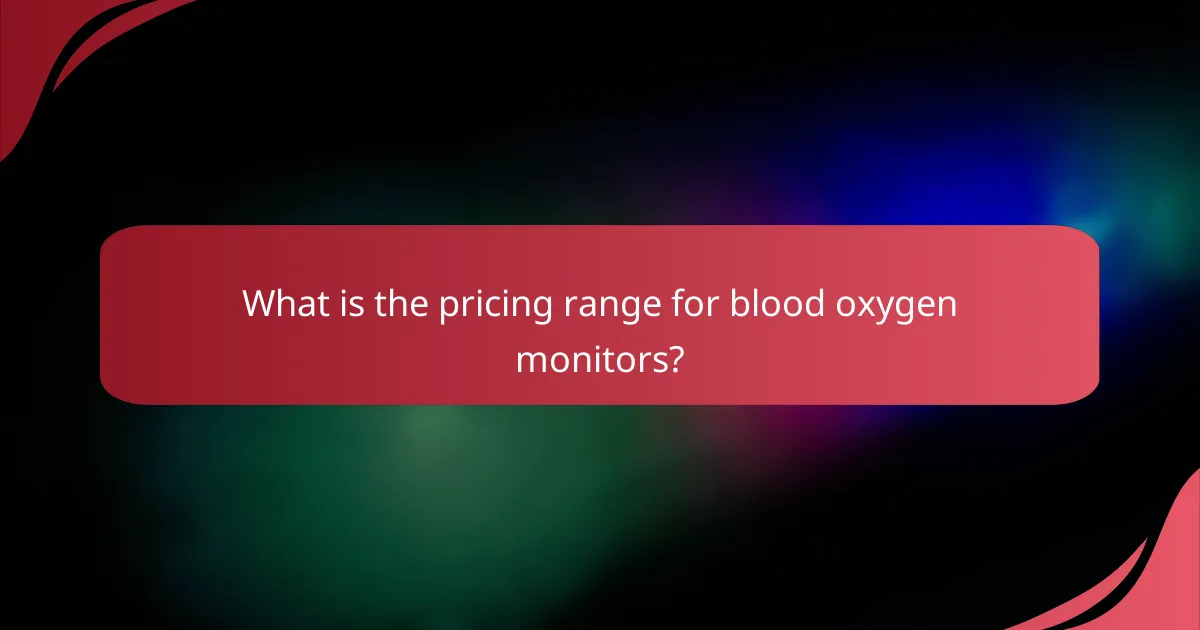
What is the pricing range for blood oxygen monitors?
The pricing range for blood oxygen monitors varies significantly based on features and brand. Generally, you can find devices priced from under $100 to over $300, catering to different needs and budgets.
Budget options under $100
Budget blood oxygen monitors typically cost less than $100 and are suitable for casual users or athletes who need basic functionality. These devices often provide essential readings of blood oxygen saturation (SpO2) and pulse rate.
When choosing a budget monitor, look for features like ease of use, battery life, and display clarity. Popular models in this range include finger pulse oximeters that are portable and user-friendly.
Mid-range devices from $100 to $300
Mid-range blood oxygen monitors, priced between $100 and $300, offer enhanced features such as Bluetooth connectivity, advanced data tracking, and more accurate readings. These devices are ideal for serious athletes who require detailed insights into their performance and recovery.
Consider options that provide additional metrics like heart rate variability and activity tracking. Brands in this category often include smartwatches and dedicated fitness trackers that integrate SpO2 monitoring.
Premium models over $300
Premium blood oxygen monitors, costing over $300, are designed for professional athletes and health enthusiasts seeking the highest accuracy and advanced features. These devices may include comprehensive health monitoring systems, integration with other health apps, and customizable alerts.
When investing in a premium model, assess the warranty, customer support, and compatibility with other fitness devices. High-end options often come from reputable brands known for their reliability and precision in health monitoring.
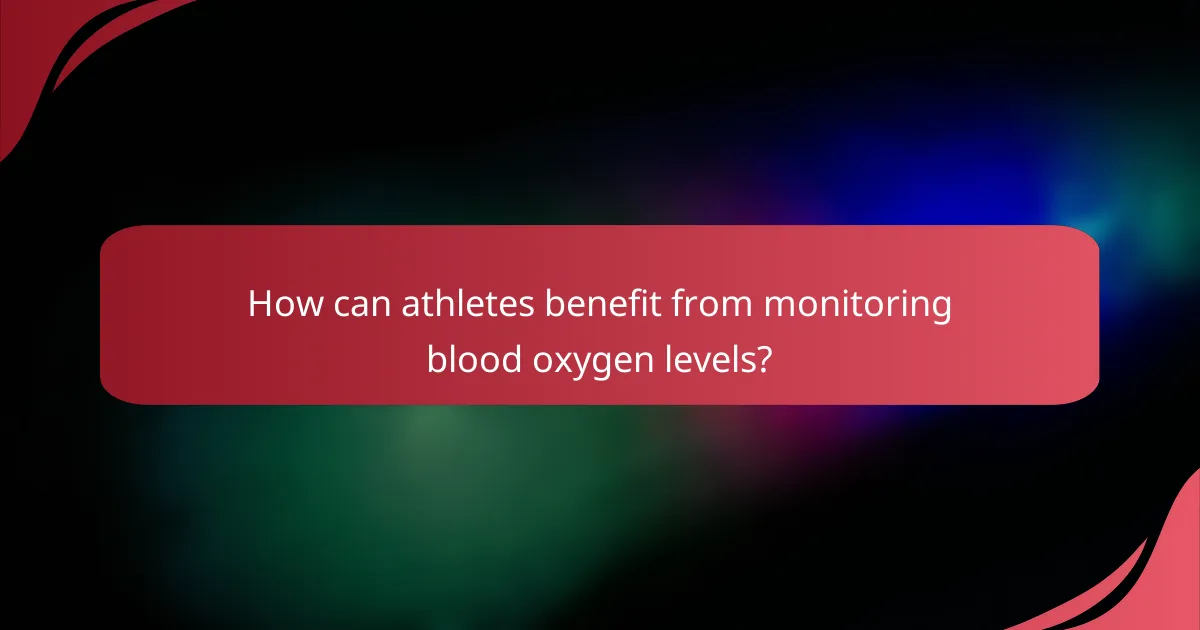
How can athletes benefit from monitoring blood oxygen levels?
Monitoring blood oxygen levels can significantly enhance an athlete’s performance by providing insights into their respiratory efficiency and overall fitness. By tracking these levels, athletes can optimize their training and recovery strategies, ensuring they maintain peak performance during competitions.
Improved training efficiency
By keeping an eye on blood oxygen levels, athletes can tailor their training regimens to maximize efficiency. For instance, during high-intensity workouts, monitoring can help determine if an athlete is reaching their optimal oxygen saturation, which typically ranges from 95% to 100% for healthy individuals. If levels drop significantly, it may indicate the need for adjustments in training intensity or duration.
Using devices that provide real-time feedback allows athletes to make immediate changes, such as reducing effort or incorporating rest periods. This proactive approach can lead to more effective workouts and better overall performance.
Enhanced recovery strategies
Monitoring blood oxygen levels also plays a crucial role in recovery strategies. After intense workouts, athletes can assess their oxygen saturation to gauge how well their body is recovering. A drop in levels may suggest inadequate recovery, prompting the need for additional rest or nutritional support.
Incorporating blood oxygen monitoring into recovery routines can help athletes identify optimal recovery practices, such as hydration, nutrition, and sleep. For example, maintaining oxygen saturation above 90% during recovery can be a good indicator that the body is recuperating effectively, allowing athletes to return to training sooner and with greater vigor.

